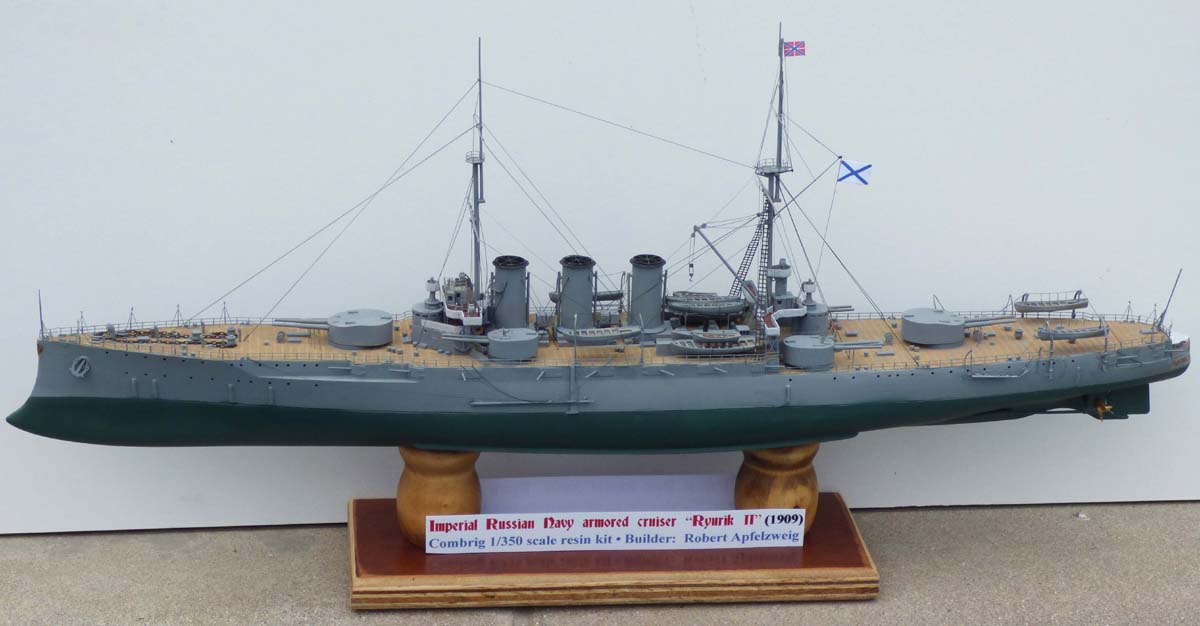
1/350 Russian armored cruiser Ryurik II (Combrig)
|
by Robert Apfelzweig |

1/350 Russian armored cruiser Ryurik II (Combrig)
The story of the second Imperial Russian armored cruiser Ryurik (or Rurik, as sometimes spelled in English -- the first cruiser Ryurik was sunk in the Russo-Japanese War) is one of missed opportunities and bad timing. Built by the British firm Vickers as the first of a proposed trio of powerful armored cruisers in Russia's desperate attempt to rebuild its navy following the disastrous Russo-Japanese War of 1904-05, the ship was indeed one of the most powerful such warships ever built (with a stronger broadside than Germany's contemporary SMS Blücher -- four 10-in. and four 8-in. vs. eight 8.2-in. guns for the Blücher), but like that German armored cruiser, it was made immediately obsolete by the introduction of the three-ship HMS Invincible class of new battlecruisers. Realizing this, the Russian naval authorities cancelled the two remaining proposed armored cruisers of the Ryurik II class. The ship was also somewhat slower than contemporary armored cruisers, with a top speed of only 21 knots. Commissioned in 1909, at that time her foremast was a short pole and the small bridge house immediately behind the armored conning tower had not been installed; the ship's general appearance is as it would have been at the start of World War I. She served as flagship of Russia's Baltic Fleet during that war and was mined several times, being repaired in each instance, but by 1918 was considered worn out and was hulked in 1922 and sold for scrapping in 1930.Combrig's resin model of the Ryurik II has excellent casting of the upper and lower hulls, which fit together fairly well, but the instructions are the usual inadequate several pages of exploded views, with precise of location of many smaller parts indistinct. Fortunately, there are numerous good photos of the ship available online, especially useful for determining how to rig her. I could not find any aftermarket ratlines of the type attached to the mainmast, so I cut some fiberglass window screen segments and adapted them for the job. Combrig's brass photoetch is limited, 2-dimensional and generally inadequate, with no railings and poorly made ladders; I used aftermarket parts from MasterModel, NorthStar models and other sources, including some scratch-building. Rigging is from stretched black sprue. A few of the larger gun barrels were warped, but I managed to straighten them by briefly warming each one over a candle flame. I made my own flags and decals, including the slightly oversized nameplates of the ship (in Cyrillic script) at the stern. The simulated canvas covering of the Admiral's walk at the fantail is white tissue paper.
